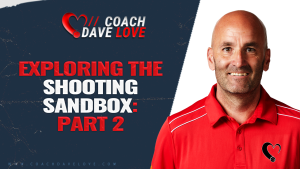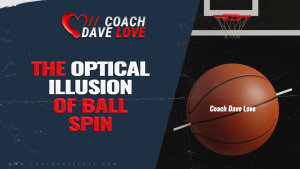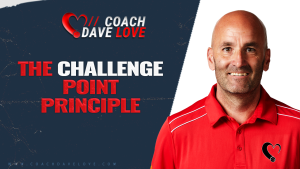Imagine you are standing on one side of a raging river, and you need to get across to the other side. That is the metaphor for changing a habit. We are currently in one place, but we need to get to another place and it is going to be hard. The river will be unforgiving.
When you are building a new habit, you are trying to get to the other side of the river, executing the new habit in a game situation.
What many people do, both coaches and players, is they try to jump.
They correctly identify the habit that needs to change and they try to do it at game speed. Many times their habits will be too strong and they won’t have enough time to consciously do it differently, so their body goes back to what it knows. The habit never changes, and the player or coach (or both) give up.
Rather than players to jump as far as they can across the river, failing and getting wet, I take a different approach.
I simplify the situation as much as needed to have the time to consciously change the habit. This usually means slowing down to stationary, and most times even very close to the hoop, and just concentrating on doing something different. The easiest example of this is form shooting.
Then once the player is getting better at the habit, rather than expecting them to now be able to jump across the river, I lay a stepping stone for them. They are able to do this new thing in a simple situation, so I make the situation just a little bit harder. The smallest amount possible is most cases. Here is an example. If a player shoots with their feet together and on poor balance, my first stage would be to have them stand with their feet wider apart. My first stepping stone would then be to simply hop straight forward and land with their feet wider apart. If you can do the first, you should have no trouble with the second. We are now one step further across the river, standing on a stepping stone, and we are safe and dry.
Then as the habit gets stronger, I’ll add another little layer to the drill. I’ll add another stepping stone. Maybe the player needs to turn and hop into position. Since they could hop straight forward, turning and hopping isn’t that big of a challenge. They are usually able to be successful fairly quickly. Now we are two steps further across the river.
I continue to add and subtract layers to drills, holding the player accountable to new habits, until they are able to execute the habit in a game situation.
What do I mean by layers? Speed is a layer. Want to make a drill a little harder? Do it faster. Distance is a layer. Want to make a drill harder? Do it further out. Movement is a layer. Defenders are layers. Decisions are layers. You can add multiple layers. Game situations are all the layers at one time.
Think of developing a skill as layers, lay the appropriate stepping stones and you’ll be able to one day walk across the river.



